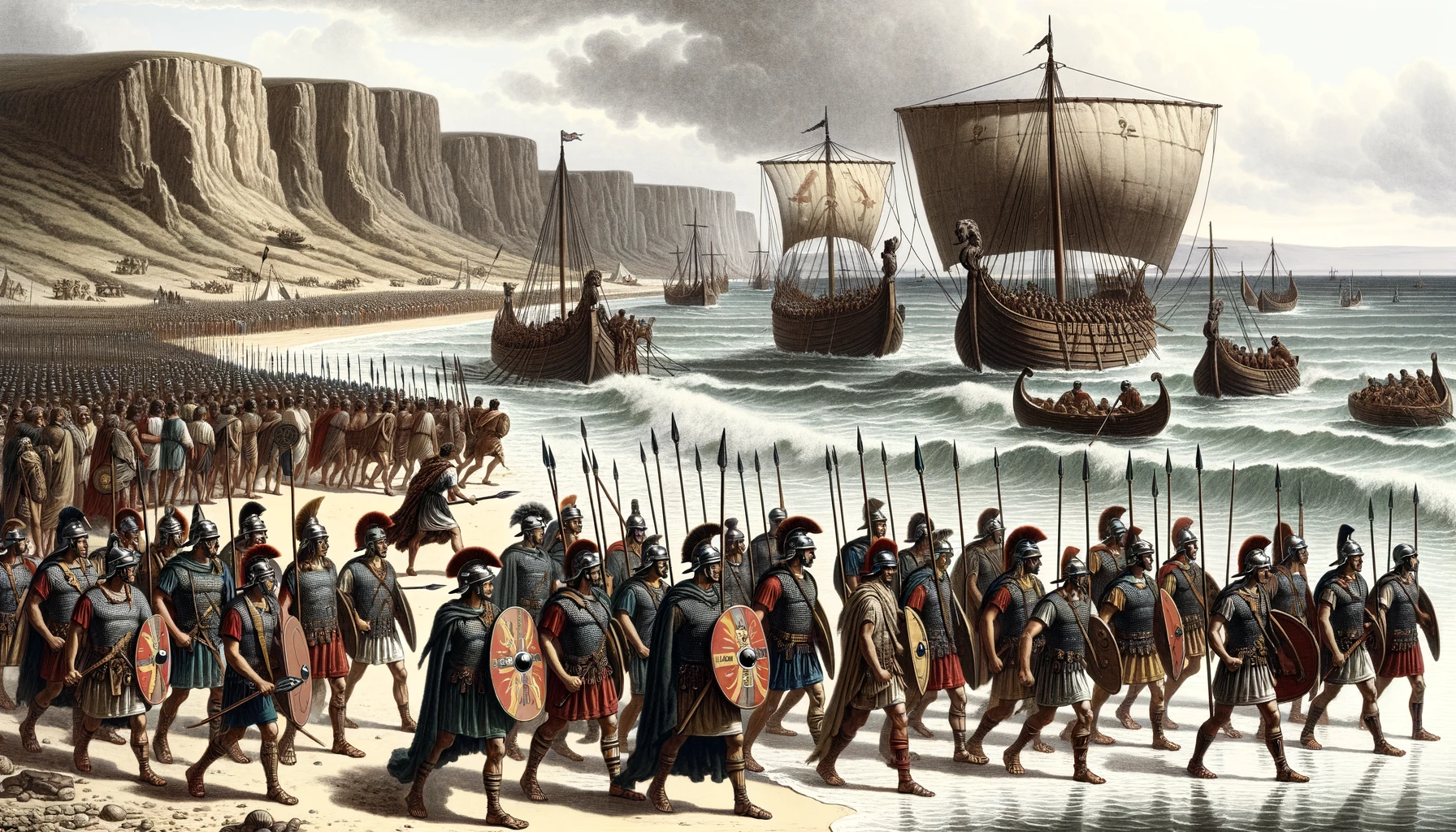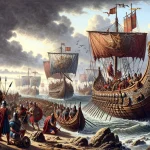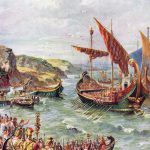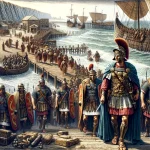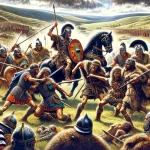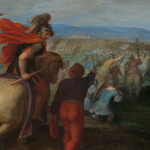The lead-up to the Roman invasion of Britain in 43 AD was shaped by a mix of political, economic, and strategic factors. Britain, known for its valuable resources like tin and wool, had long been on the Roman radar especially after Julius Caesar had made exploratory incursions in 55 and 54 BC.
Why did Rome invade Britain?

By the time of Emperor Claudius, Rome was eager to expand its frontiers and secure more resources. The immediate pretext for the invasion came when Verica, a British king and Roman ally, was deposed by his rivals, the Catuvellauni tribe. This provided Claudius with a convenient reason to intervene under the guise of restoring a client king. Moreover, the conquest of Britain offered Claudius, who had recently become Emperor under controversial circumstances, an opportunity to secure his position with a significant military triumph. The invasion, therefore, was as much about Roman imperial ambition and the consolidation of Claudius’ political power as it was about subjugating a new territory.
Invasion led by Aulus Plautius (43-46AD )
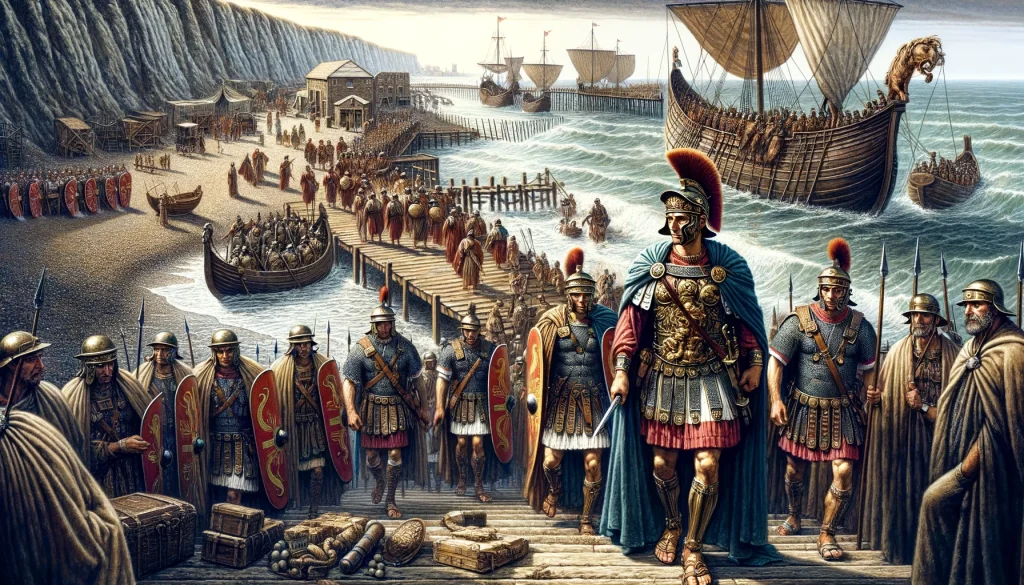
Upon their arrival in 43 AD, led by Aulus Plautius, the Romans immediately faced resistance from the Catuvellauni tribe, led by the brothers Caratacus and Togodumnus. The Romans successfully convinced the allied Dobunni tribe to switch allegiance, aiding in their rapid victories over the Catuvellauni at the Medway and Thames battles. Togodumnus succumbed to his battle wounds, while Caratacus escaped to South Wales with his followers. With the tide turned in Rome’s favor, Plautius paused his campaign and summoned Emperor Claudius, who soon arrived with elephants, a first on English soil, to lead the final assault on the Catuvellauni stronghold, Camulodunum (present-day Colchester). This triumph led to the erection of a temple dedicated to Claudius and the incorporation of Catuvellauni territory into the newly formed Roman province.
- The Claudian Invasion of Britain (43AD)
- The Battle of Medway (43AD)
- Roman Advance from the Medway to Camulodunium
- Who were the Eleven British Kings who surrendered to Claudius?
- Emperor Claudius’ Victory Celebrations
- The Military Campaign of Aulus Plautius (AD43-46)
Consolidation of Southern Tribes
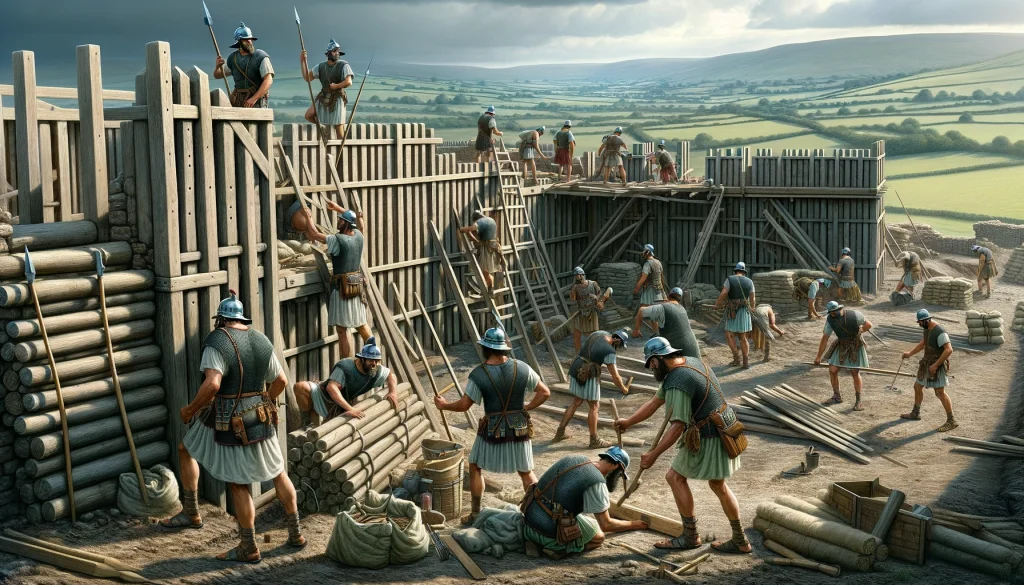
In the aftermath, Roman influence and control extended over southern England. Rome focused on fortifying its presence through the construction of forts, settlements, and an extensive road network. London (Londinium) was founded around 47 AD, coinciding with Plautius’ replacement by Governor Publius Ostrorius Scapula. Scapula immediately launched an offensive against the Decangli in North Wales and proposed disarming all British tribes, a move that backfired and incited the Brigantes and Iceni tribes to rebel. Although these uprisings were quickly quelled by Scapula, who abandoned his Decangli campaign, both tribes retained their autonomy under their rulers, Cartimandua and Prasutagus, respectively.
Advances into the North England and Wales
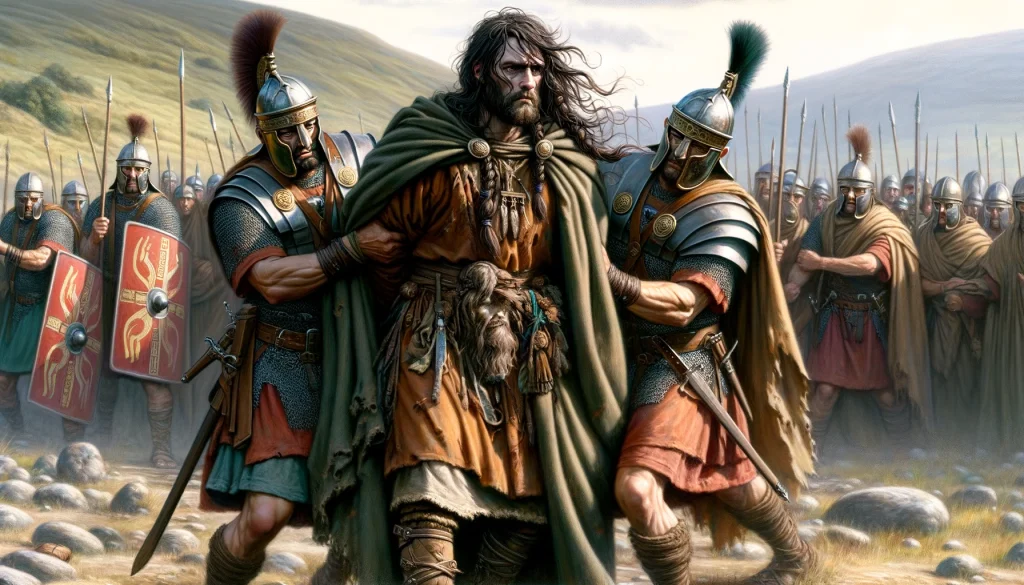
Scapula resumed his military efforts against the Decangli in 48 AD, later advancing into Ordovices Celtic Tribe territory. Here, he encountered strong resistance from the Silures Celtic Tribe, who, under Caratacus’ leadership and allied with the Ordovices, engaged Rome in a gruelling guerrilla warfare. It took three years for Scapula to finally defeat Caratacus in Ordovices land in 51 AD. Caratacus sought refuge with Cartimandua in Brigantes territory after his defeat but was betrayed, captured, and handed over to the Romans. Taken to Rome for trial, Caratacus’ eloquent defence won him his freedom and Roman citizenship, allowing him and his family to spend their remaining years in the capital.
